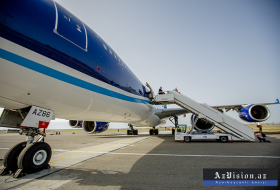Researchers found evidence of a significant number of double supermassive black holes. Those are probably precursors to a full merging, of the kind that would send shock waves through the universe.
Scientists say the discovery helps support a theory about the way the universe will develop, as galaxies and their associated black holes merge into each other and expand into even bigger galaxies or black holes.
Astronomers looked at radio maps of powerful jets being flung towards Earth from elsewhere in space. They found a series of signs that suggested black holes are closely orbiting each other.
Before black holes fully merge together, they form what is known as a binary black hole, swirling around each other in orbit before they eventually get close and smash into each other. Scientists have spotted evidence of smaller black holes crashing into each other since 2015, by measuring the gravitational waves that are sent out into the universe.
But scientists haven’t yet been able to see evidence of the bigger, supermassive binary black holes.
Now scientists have examined the powerful jets that are thrown out by supermassive black holes. As the binary black holes orbit each other, the jet coming out will occasionally change direction – by mapping those as they change, scientists can confirm that those binary black holes do exist.
“We have studied the jets in different conditions for a long time with computer simulations,” said Martin Krause, lead author and senior lecturer in Astronomy at the University of Hertfordshire. ”In this first systematic comparison to high-resolution radio maps of the most powerful radio sources, we were astonished to find signatures that were compatible with jet precession in three quarters of the sources.”
The Independent
More about: blackholes
















































